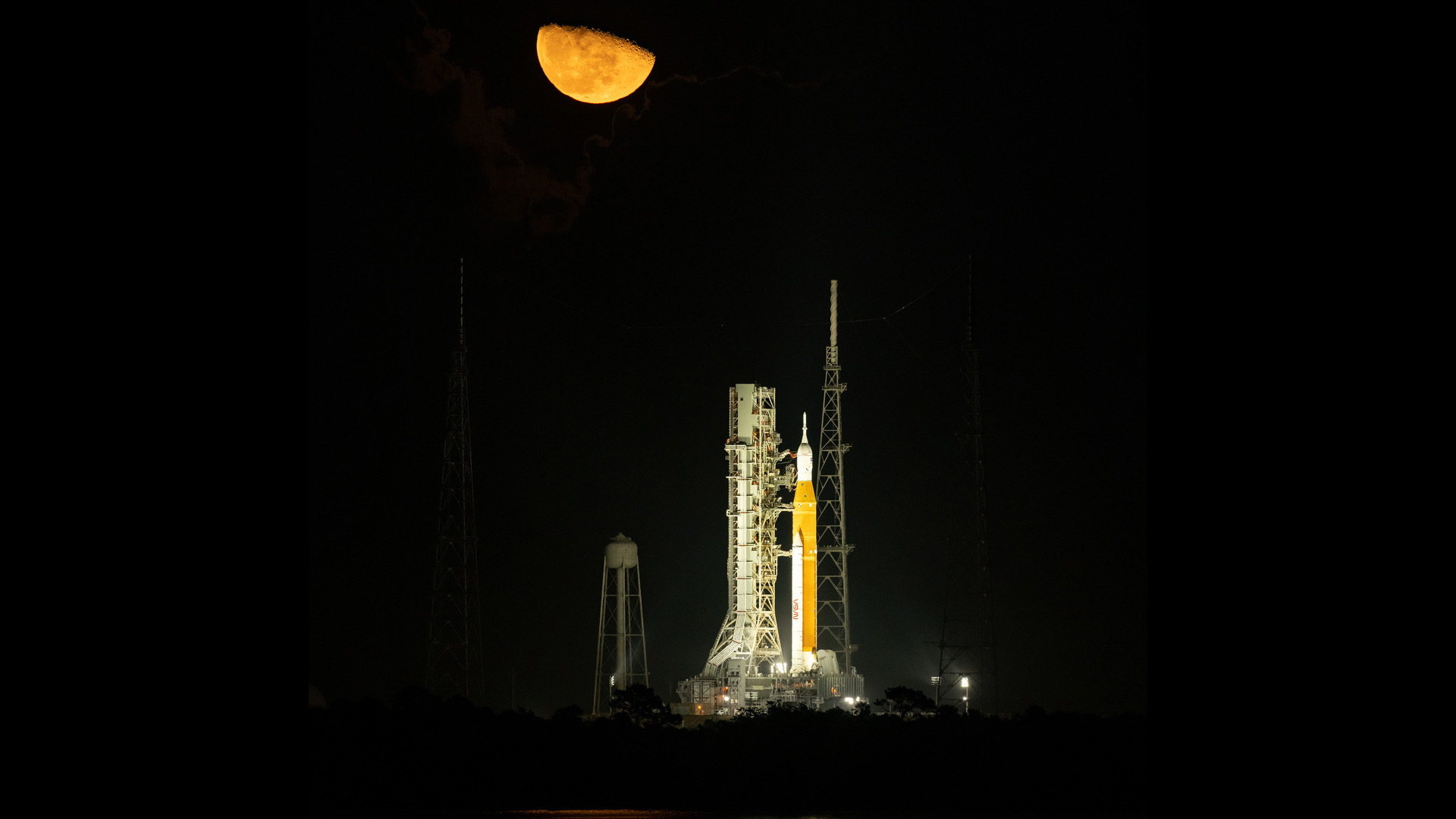NASA fuels Artemis 1 moon rocket for long-delayed lunar test flight
Another prelaunch milestone is in the books.
Update for 2 am ET: NASA successfully launched the Artemis 1 moon mission on the first Space Launch System rocket at 1:47 am EST (0647 GMT) in a stunning success. Read our full Artemis 1 launch story.
CAPE CANAVERAL, Fla. — NASA has begun fueling its giant new rocket for its first mission to the moon.
The agency began loading propellant into its Artemis 1 moon rocket, the Space Launch System (SLS), at 4:32 p.m. EST (2132 GMT) on Tuesday (Nov. 15), a process expected to take about six hours.
Artemis 1 is being fueled ahead of a two-hour launch window that opens at 1:04 a.m. EST (0604 GMT) on Wednesday (Nov. 16). If successful, the launch will send an uncrewed Orion spacecraft on a 26-day mission into orbit around the moon and back.
The weather forecast remains 80% favorable for Wednesday's launch, according to weather officers with the U.S. Space Force's Space Launch Delta 45 that operates Launch Pad 39B here at Kennedy Space Center (KSC) in Florida.
Be sure to tune in to the countdown, fueling and launch of Artemis 1 live online here on Space.com, courtesy of NASA.
Related: Watch NASA's Artemis 1 moon rocket launch on Nov. 16 online for free
Read more: NASA's Artemis 1 moon mission: Live updates
Get the Space.com Newsletter
Breaking space news, the latest updates on rocket launches, skywatching events and more!

This is NASA's third attempt to launch the SLS vehicle and Orion spacecraft. The first Artemis 1 attempt, on Aug. 29, was scrubbed due to a glitch in the cooling process of one of the rocket's four main engines. A second attempt followed on Sept. 3. That too, was scrubbed, when the rocket began leaking hydrogen during the fueling process. The SLS vehicle was then rolled back in to KSC's gargantuan Vehicle Assembly Building for repairs and analysis and to shelter it from Hurricane Ian as the storm made landfall in late September.
After the Artemis 1 moon rocket was rolled back out to Launch Pad 39B on Nov. 4, the beleaguered vehicle hit another setback when Hurricane Nicole (quickly downgraded to a tropical storm) made landfall on Nov. 10. High winds caused slight damage to a section of insulative caulking on the outside of the Orion capsule atop the SLS rocket, but NASA's Artemis 1 mission managers have assured the media that the vehicle remains flightworthy.
After performing analyses of the storm damage, Mike Sarafin, Artemis mission manager at NASA headquarters in Washington, said that SLS is still clear for launch and that "there's no change in our plan to attempt to launch on the 16th" during a media teleconference Monday (Nov. 14).
The Artemis 1 mission will be a key shakedown of the SLS rocket and Orion spacecraft ahead of planned crewed moon missions later this decade. This first mission will deploy 10 scientific payloads known as cubesats and will place Orion in orbit around the moon.
Artemis 2 will then see a human crew test the Orion spacecraft on a round-the-moon trip no earlier than 2024. Following that, Artemis 3 plans to return astronauts to the moon in 2025, placing them near the lunar south pole as part of an overarching goal of the Artemis program to begin working toward a permanent human presence on the moon.
Follow Brett on Twitter at @bretttingley. Follow us on Twitter @Spacedotcom or on Facebook.
Join our Space Forums to keep talking space on the latest missions, night sky and more! And if you have a news tip, correction or comment, let us know at: community@space.com.

Brett is curious about emerging aerospace technologies, alternative launch concepts, military space developments and uncrewed aircraft systems. Brett's work has appeared on Scientific American, The War Zone, Popular Science, the History Channel, Science Discovery and more. Brett has English degrees from Clemson University and the University of North Carolina at Charlotte. In his free time, Brett enjoys skywatching throughout the dark skies of the Appalachian mountains.









